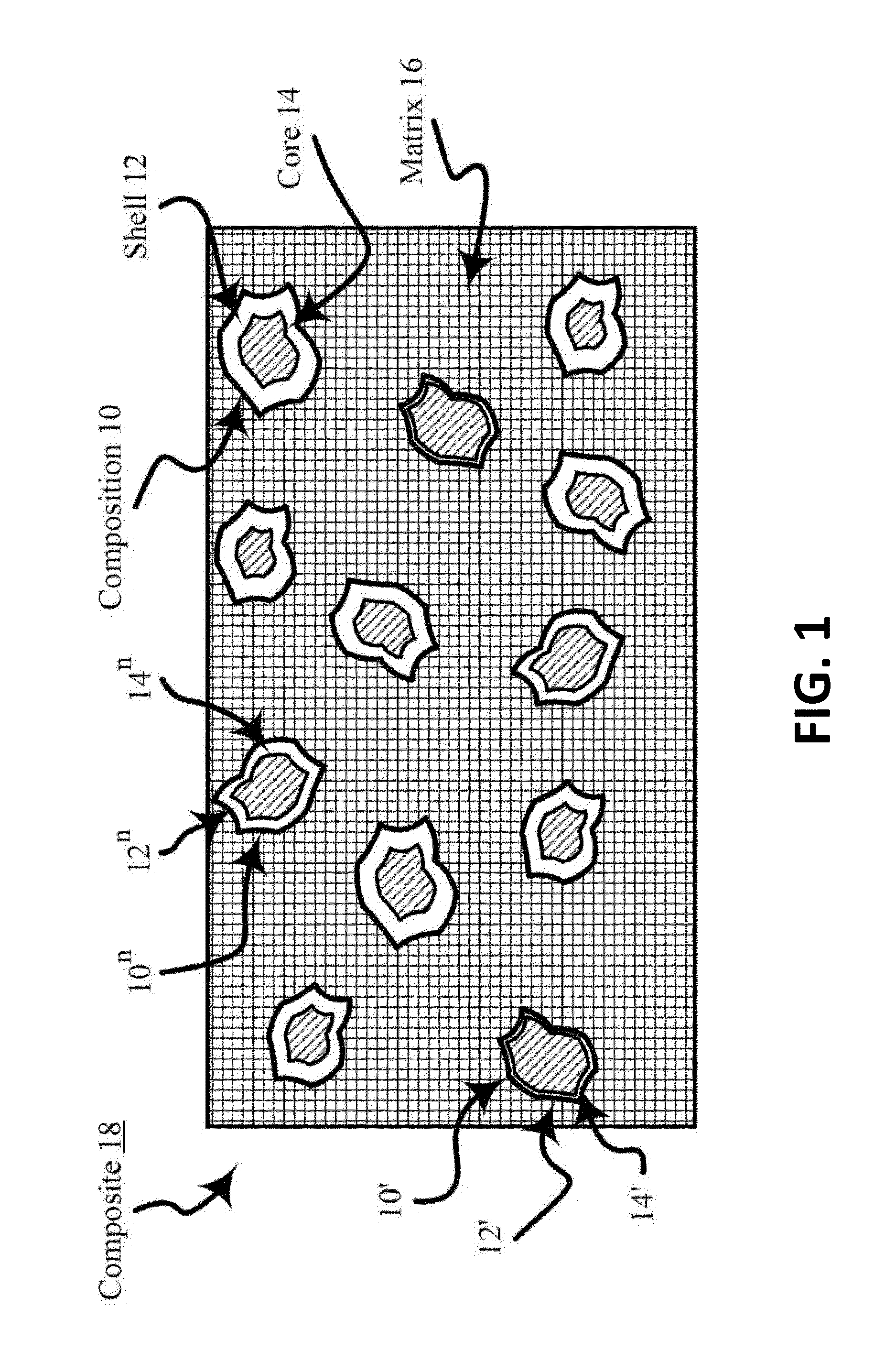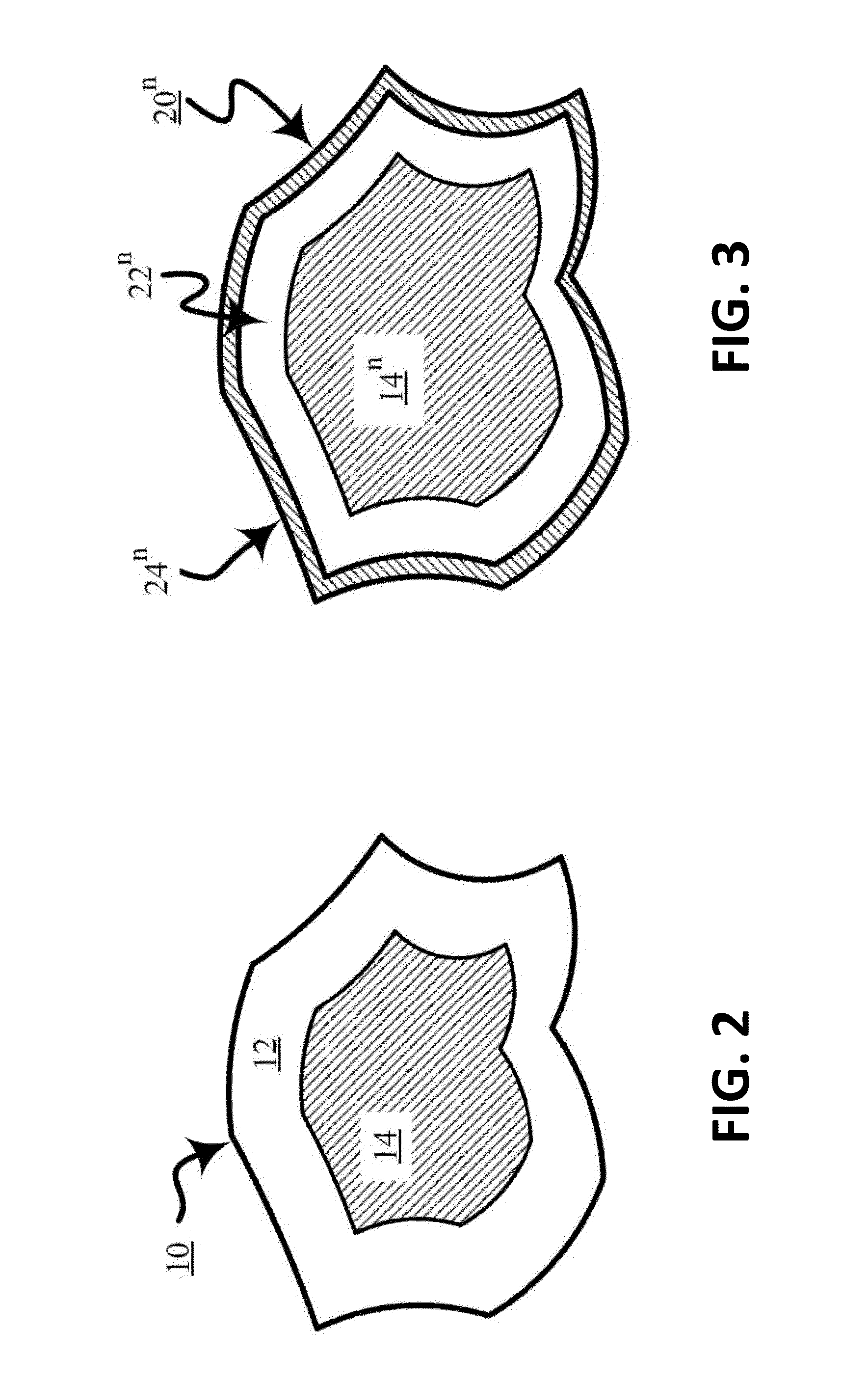Electrocatalytic composite(s), associated composition(s), and associated process(ES)
a technology of electrocatalysis and composites, applied in chemical/physical processes, metal-working apparatus, metal/metal-oxide/metal-hydroxide catalysts, etc., can solve the problems of significant reduction of fuel cell efficiency, insufficient to justify the use of such fuel cells for automobile drive assemblies, and one method is strictly limited, so as to facilitate economically attractive catalysts, reduce noble metal content, and improve activity and stability
- Summary
- Abstract
- Description
- Claims
- Application Information
AI Technical Summary
Benefits of technology
Problems solved by technology
Method used
Image
Examples
example a (
CPC35A1PtZ)
[0104]This Example A relates to a process for a preparation of a composite material of (1) a porous carbon matrix and (2) a composition of nanoparticles including copper and platinum. As described above, the process comprises four (4) stages.
[0105]First stage: A mixture of ingredients is prepared by sequentially adding to about 200 mL of water at about 60° C. while stirring:[0106]from about 5 grams (g) to about 15 g of gelatin GELATIN-B; FLUKA brand and now Sigma-Aldrich Chemie GmbH, Switzerland, cat. No. 48722);[0107]from about 0.5 g to about 2 g of cetyl-trimethyl-ammonium bromide (CTAB-FLUKA brand and now Sigma-Aldrich Chemie GmbH, Switzerland, cat. No. 52365);[0108]from about 5 g to about 20 g of copper acetate (FLUKA brand and now Sigma-Aldrich Chemie GmbH, Switzerland, cat. No. 61145); and[0109]from about 2 g to about 10 g of carbon black (VULCAN® XC72R carbon black, Cabot Corporation headquartered in Boston, Mass., US).
The mixture is homogenized while stirring for ...
example b (
CPC33APtS)
[0121]This Example B relates to a process for a preparation of a composite material of (1) a porous carbon matrix and (2) a composition of nanoparticles including nickel and platinum. As described above, the process might include four (4) stages.
[0122]The process of Example B is substantially that of Example A except that in the First Stage nickel acetate tetrahydrate (FLUKA brand and now Sigma-Aldrich Chemie GmbH, Switzerland, cat. No. 72225) is used instead of copper acetate monohydrate in the preparation of the freeze-dried gel.
[0123]The heat-treated composite of this Example B includes a porous carbon matrix and nanoparticles including a platinum-nickel alloy coated nickel (e.g., a platinum-nickel alloy shell on a nickel core) and. The platinum-nickel alloy shell on the nickel core is characterized as comprising a non-structured portion (e.g., unarranged Fm 3m structure) and a structured portion (e.g., arranged Pm 3m structure or P4 / mmm structure . . . etc.).
[0124]A sh...
example c (
CPC35APdZ)
[0125]This Example C relates to a process for a preparation of a composite material of (1) a porous carbon matrix and (2) a composition of nanoparticles including copper and palladium. As described above, the process comprises four (4) stages.
[0126]The process of Example C substantially comprises that of Example A except that in the Third stage copper palladization (e.g., covering, treating, and / or combining with palladium or a compound of palladium) is used instead of platinization by using palladium chloride instead of potassium tetrachloroplatinate in the preparation of a composite of a porous carbon matrix and palladiumized nanoparticles including copper.
[0127]The heat-treated composite of this Example C includes a porous carbon matrix and nanoparticles including a palladium-copper alloy coated copper (e.g., a palladium-copper alloy shell on a copper core). The palladium-copper alloy shell on the copper core is characterized as comprising a non-structured portion (e.g....
PUM
| Property | Measurement | Unit |
|---|---|---|
| weight percent | aaaaa | aaaaa |
| voltage | aaaaa | aaaaa |
| temperatures | aaaaa | aaaaa |
Abstract
Description
Claims
Application Information
 Login to View More
Login to View More - R&D
- Intellectual Property
- Life Sciences
- Materials
- Tech Scout
- Unparalleled Data Quality
- Higher Quality Content
- 60% Fewer Hallucinations
Browse by: Latest US Patents, China's latest patents, Technical Efficacy Thesaurus, Application Domain, Technology Topic, Popular Technical Reports.
© 2025 PatSnap. All rights reserved.Legal|Privacy policy|Modern Slavery Act Transparency Statement|Sitemap|About US| Contact US: help@patsnap.com



